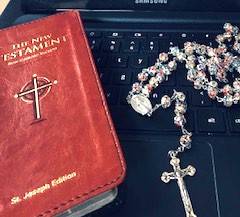 Who is your Protagonist?
Who is your Protagonist?
Your main character changes with whatever genre you write. It can be the hard-drinking detective in a crime mystery or the handsome rogue in your romance. However, this character needs to be your most developed character because he carries the plot. The author needs to fully develop his main character. You, the author, need to know 100% about this person. They need to become as real to you as your spouse or children.
However, before you develop who your character is—you have to have some idea of your story and what kind of protagonist fits the tale. Who is your audience? Is your book for children or adults? Is it a fantasy or a contemporary tale? What does your protagonist have to accomplish? What does she have to learn? Can this character carry the plot?
What does your protagonist look like?
- Give your character a body
- Now dress him/her
- Decorate your character. Is he messy? Does she have OCD? Does he carry a pocket watch, a Rolex, or a fit bit? Does she carry a briefcase, a wand, or a book? Give your character props. Readers love them.
Imagine your character walking into a restaurant—How do they walk? What are they carrying? What do they order? How does their physical appearance lend to the story and what kind of person do they appear to be?
Why is physical appearance important?
An author tells his story in more than words. The reader may not even realize the detailed process the author goes through in creating the character but the character’s appearance greatly influences how the reader relates to the protagonist. For example, an angry child throwing a temper tantrum is looked on differently than an old grizzled man doing the same. Let’s take a look at one of my favorite characters and see what J.R. Tolkien tells us about Frodo Baggins by his appearance:
He is tiny – indicating humility and an unlikely hero
He has big hairy feet – indicating he is solid and practical
He is dressed in a cape – a hint of his heroism
He carries a walking stick and a ring – indicating the circular journey ahead.
See how much you know about Frodo without a word or movement. You need to know as much about your own main character.
Why are the details important?
One way to develop your main character is to do it quickly and allow your unconscious mind (which already knows your character!) to lead the way. Here are some simple descriptions to answer. Just do it quickly with whatever pops into your mind.
Name? Nickname? Age? Gender? Marital status? Religion? Nationality? Childhood home? Current residence? Education? Profession? Family? Pets? Habits (good and bad)? Hobbies? Health? Disability or frailties? What does your character most like about himself? Least like about herself? Type A or type B personality? Romance? Relationships? Biggest disappointment? Pet peeve? Greatest weakness? Most dear to them? Fear? How do they show fear? What do they want most in life? Why? Would they be changed by getting it? Or not getting it?
Should your character be perfect?
Only if you want to bore your readers to death. I once heard the saying, “Fiction is bad things happening to interesting people.” Interesting people have flaws. Think about the characters you remember. Monk had OCD. Tom Sawyer was a rascal. Frodo was a loner. They had to have flaws that would endear the readers to them. And if they didn’t have any flaws how would they grow. The tale they live and the journey they take need to change them. No sense changing a perfect person. So give your main character a flaw. The more improbable the flaw, the more memorable the character. Think about what you would remember, perhaps a heavy-weight champion whose afraid of spiders. Or an over-weight girl always breaking her diet because she’s addicted to hot dogs. Something that the reader can relate to. Let the character grow, overcome their fear or challenge. That is unless it is a series then you better keep the flaw! Have some fun. You may create a lot of characters but only use one. Save the others for another work.
What is an orphan character?
Writing for children can be great fun. Your main character can be an animal or even an inanimate object. In kidlit stars can talk, teapots sing and even trees move around. However, if your main character is a child, they will usually be an orphan. Think about it. Who are the beloved characters that you remember? Anne of Green Gables came from an orphanage. Dorothy of “The Wizard of Oz” was an orphan. Tom Sawyer was living with his aunt—orphan! Frodo Baggins was an orphan. Why even Nancy Drew was motherless.
Why? Because the reader is instantly drawn to protect and be on the side of the saddest condition of all—a child alone. Besides, without parents, the child is the hero and needs to solve all of life’s problems with wit, faith, and courage alone. No wonder a child is drawn to them. They teach a child that they needn’t be afraid. That they can do it on their own. That they are enough. So if you write for children, make your main character an orphan. It works every time!
In our next post, let’s explore the ‘Best Friend Character’ and how to create them. They are an important part of fiction and play an important part in your story. To follow the Learning the Craft series go to: http://blog.catholicwritersguild.com/?s=Learning+the+Craft